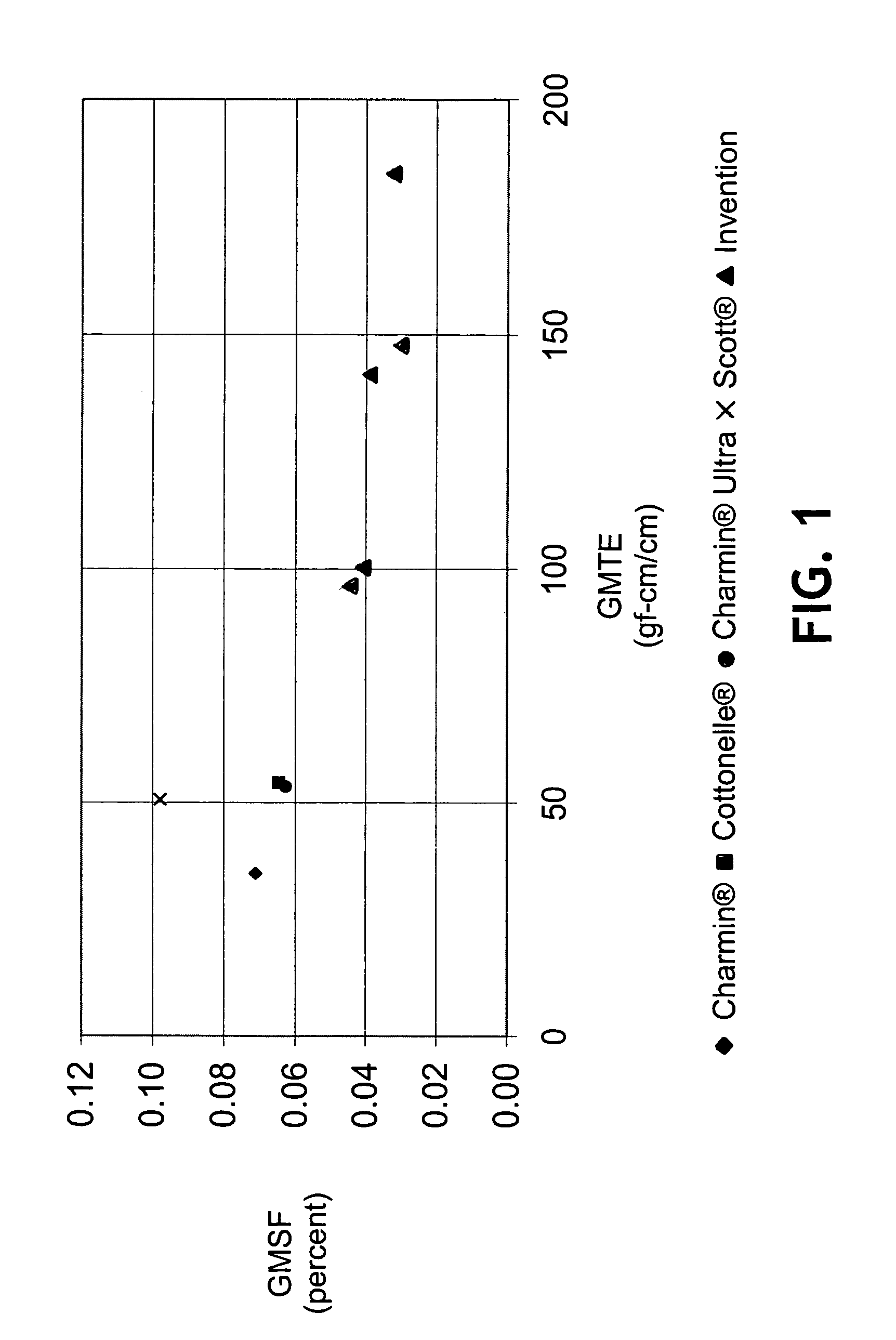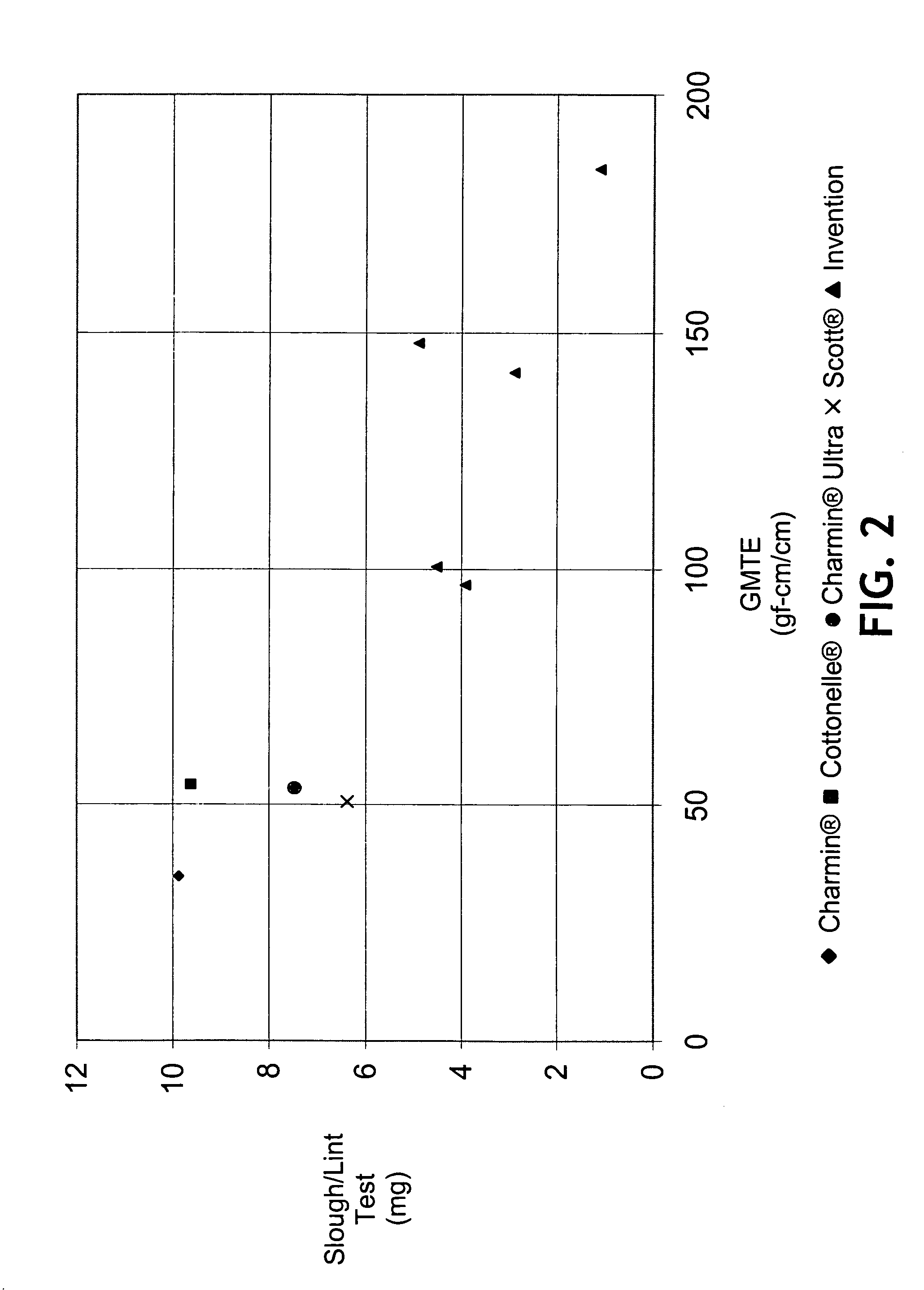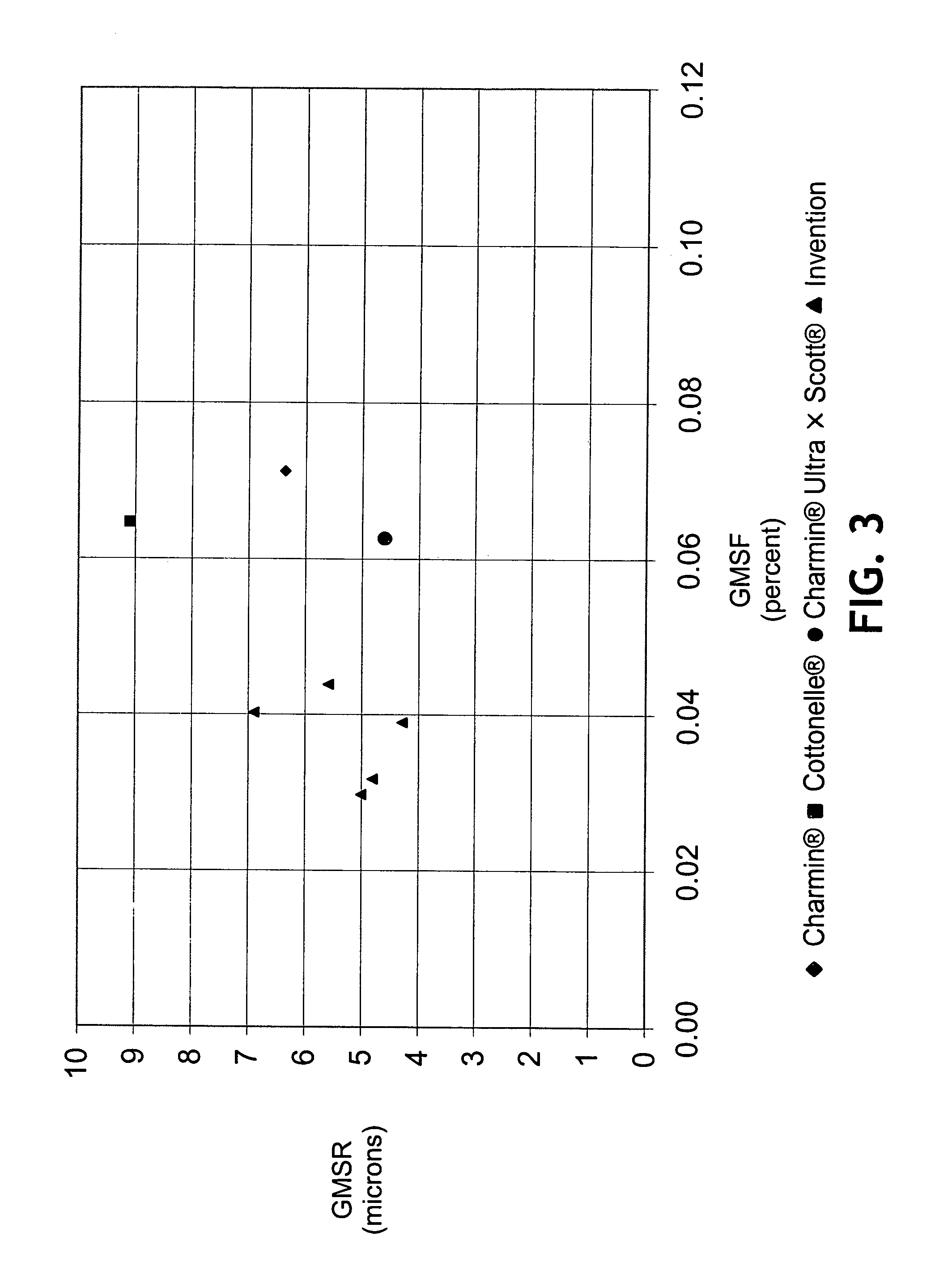Soft durable tissue
a soft durable and tissue technology, applied in the field of soft durable tissue, can solve the problems of increasing the stiffness of the sheet, affecting the strength of the tissue, and affecting the strength of the tissue, and achieve the effect of adequate strength
- Summary
- Abstract
- Description
- Claims
- Application Information
AI Technical Summary
Benefits of technology
Problems solved by technology
Method used
Image
Examples
example 1 (
Uncreped Throughdried Basesheet)
[0066]In order to further illustrate this invention, a three-layered, single-ply, uncreped throughdried bath tissue basesheet in accordance with this invention was made in which the outer layers consisted of bleached northern softwood kraft fibers and the center layer consisted of debonded bleached northern hardwood kraft fibers.
[0067]Prior to formation, 100 pounds of bleached northern softwood kraft fiber (LL-19) was dispersed in a pulper for 30 minutes at a consistency of 3-5%. The stock was sent to a machine chest and diluted to a consistency of 1-2%. At the same time, 80 pounds of bleached hardwood (eucalyptus) kraft fiber was dispersed in a pulper for 20 minutes at a consistency of 2-3%. The stock slurry was sent to a machine chest and mixed with a cationic quaternary imidazoline debonder (Prosoft® TQ1003, commercially available from Hercules Inc., Wilmington, Del.) for 20-30 minutes. The debonder addition rate was 3.0 kg / mton of dry fiber.
[0068]...
example 2
Invention
[0070]The uncreped throughdried tissue basesheet of Example 1 was treated with an aqueous latex binder composition (A426 from Air Products). The binder, having a consistency of 26.8 percent solids, was printed onto both sides of the basesheet via different patterned print rolls. Binder was applied to one side of the sheet with a print roll having a reticulated grid (repeating diamond) pattern. Each diamond was 0.090 inch in length (measured from center of line to center of line) and 0.060 inch in width. The line width for the pattern was 0.012 inch. The depth of the line was 23 microns (micrometers). The surface area coverage of this pattern was 41.5 percent. This pattern applies about 55 percent of the total latex binder applied to the sheet. Binder was applied to the other side of the sheet with a print roll having a print pattern consisting of discrete elements that are each comprised of three elongated hexagon-shaped printing cells. Each hexagon was about 0.02 inch long...
example 3
Invention
[0071]A tissue sheet was made as described in Example 2, except the A426 binder solution contained 28 percent solids and the percent solids add-on was 4.6 percent.
PUM
| Property | Measurement | Unit |
|---|---|---|
| surface roughness | aaaaa | aaaaa |
| surface roughness | aaaaa | aaaaa |
| width | aaaaa | aaaaa |
Abstract
Description
Claims
Application Information
 Login to View More
Login to View More - R&D
- Intellectual Property
- Life Sciences
- Materials
- Tech Scout
- Unparalleled Data Quality
- Higher Quality Content
- 60% Fewer Hallucinations
Browse by: Latest US Patents, China's latest patents, Technical Efficacy Thesaurus, Application Domain, Technology Topic, Popular Technical Reports.
© 2025 PatSnap. All rights reserved.Legal|Privacy policy|Modern Slavery Act Transparency Statement|Sitemap|About US| Contact US: help@patsnap.com



